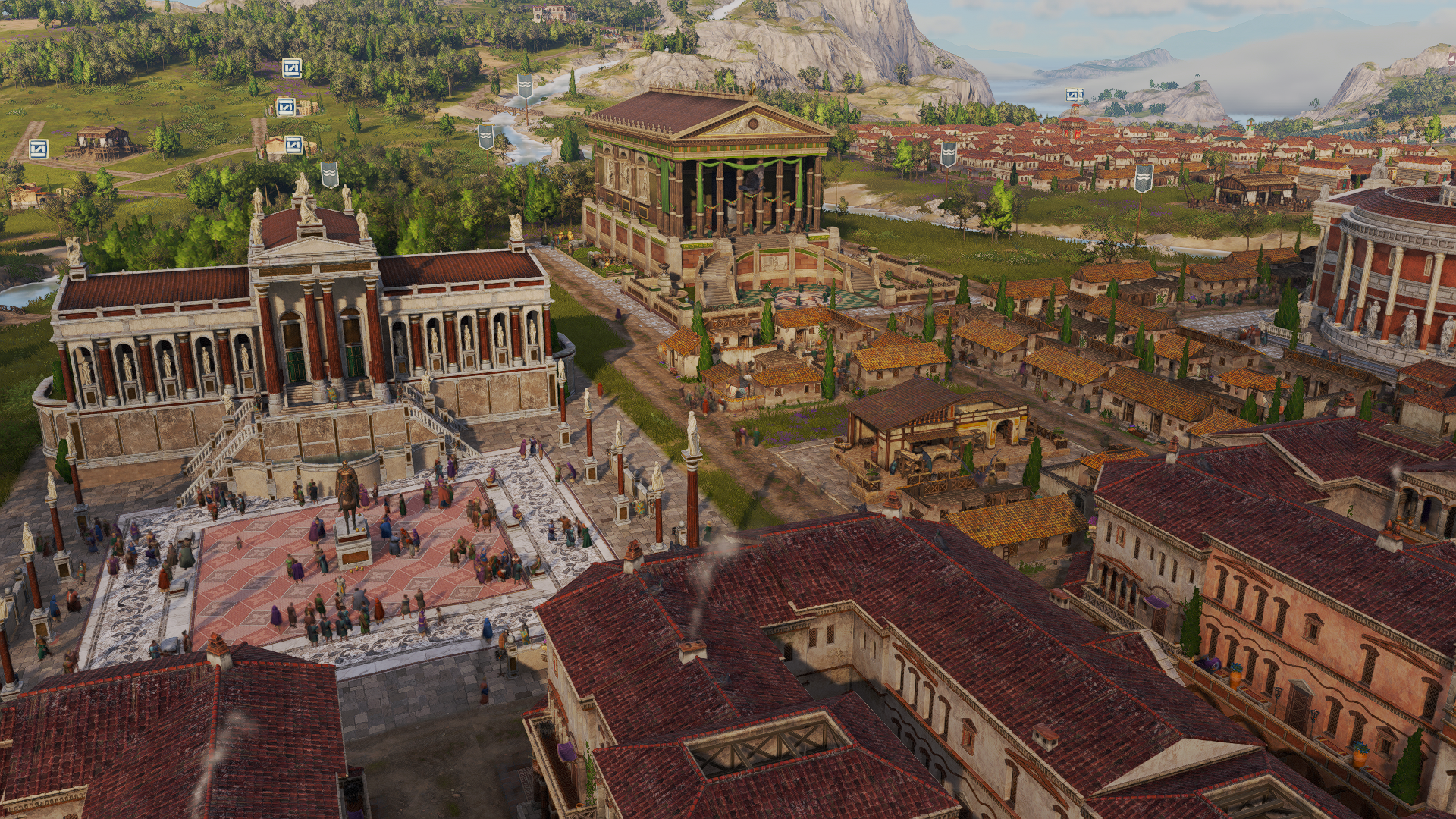TechRadar Verdict
Anno 117: Pax Romana is a beautiful and refined city builder that’s almost impossible to put down. It’s more approachable than its predecessor and is full of quality of life changes that fans will love, but it undeniably lacks the same level of depth and complexity - especially if you’re starting out in the Albion setting.
Pros
- +
It’s visually stunning
- +
The most approachable Anno game in years
- +
A proper story with some interesting twists
- +
Loads of quality of life additions
- +
Gripping supply chain management
Cons
- -
Combat is still basic
- -
Albion setting lacks some depth
Why you can trust TechRadar
Anno 117: Pax Romana is a marked return to simplicity for the long-running city-building strategy game franchise. Some returning fans might find what it offers a little basic, but for others, the more relaxed progression will be a welcome, more relaxed change of pace - especially paired with the countless quality of life features that are available from day one.
Platform reviewed: PC
Available on: PS5, Xbox Series X and Series S, PC
Release date: November 13, 2025
In contrast, its forbear Anno 1800 is one of the most complex city builders that I’ve ever played. The act of constructing a civilization is an intricate dance of lengthy supply chains that has you micromanaging the production of resources across two continents (or more with all the downloadable content) while simultaneously juggling a wealth of overlapping effects generated by the buildings in your town center.
It was incredibly rewarding to master, but doing so required plenty of YouTube tutorials, and a fair number of panicked searches on the community wiki.
A fresh start
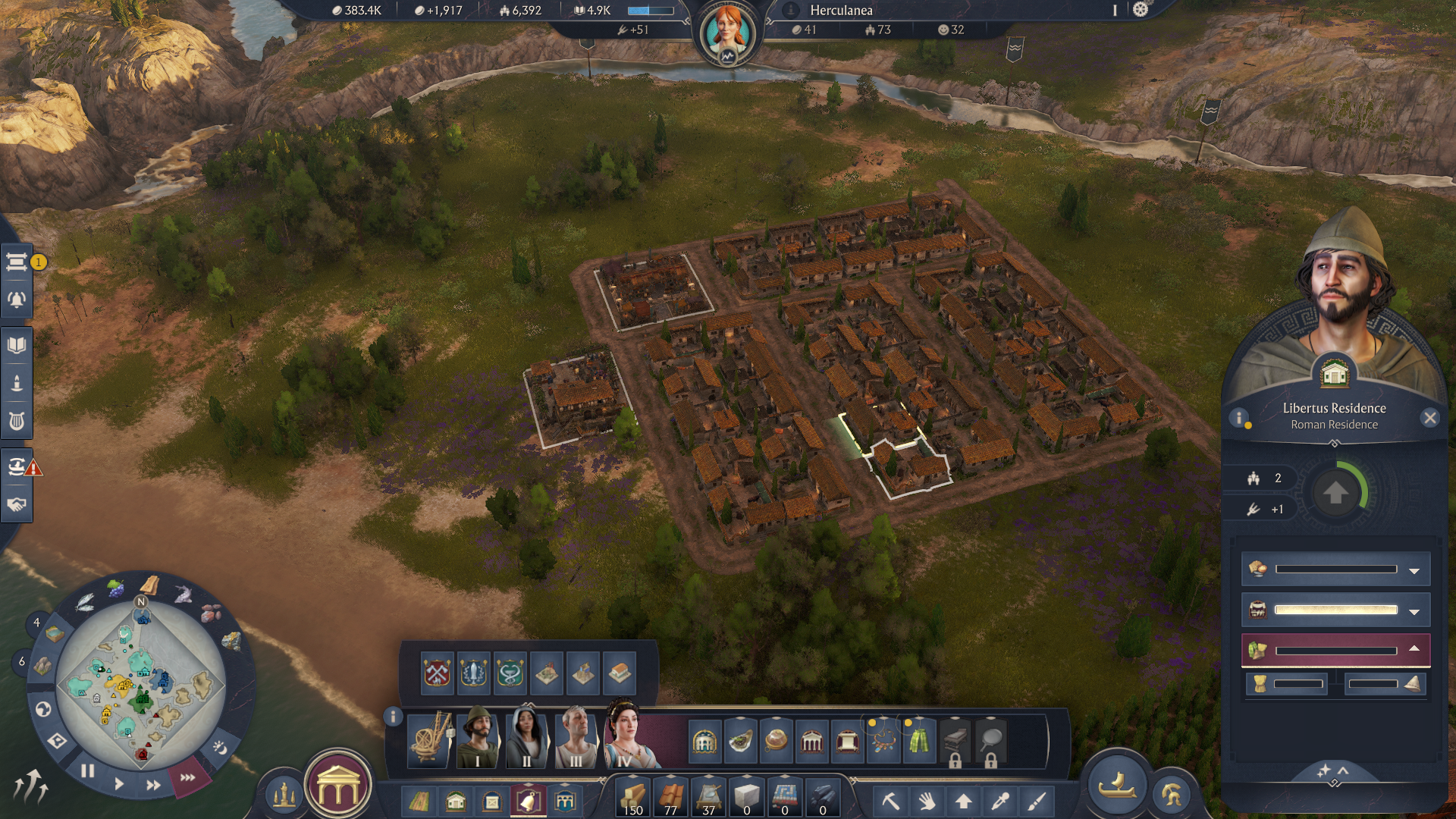
Anno 117: Pax Romana is much more approachable for newcomers, an area that was clearly a key concern for developer Ubisoft. This is especially evident in the campaign, which is one of the most engaging in series history.
Don’t get me wrong, the story mode in Anno games has always been little more than a glorified tutorial - basically showing you what you need to do to get started in a safe environment before setting you loose into the wider sandbox - and that’s no different here, but the choice to have you playing as a named character does add an extra layer of narrative detail.
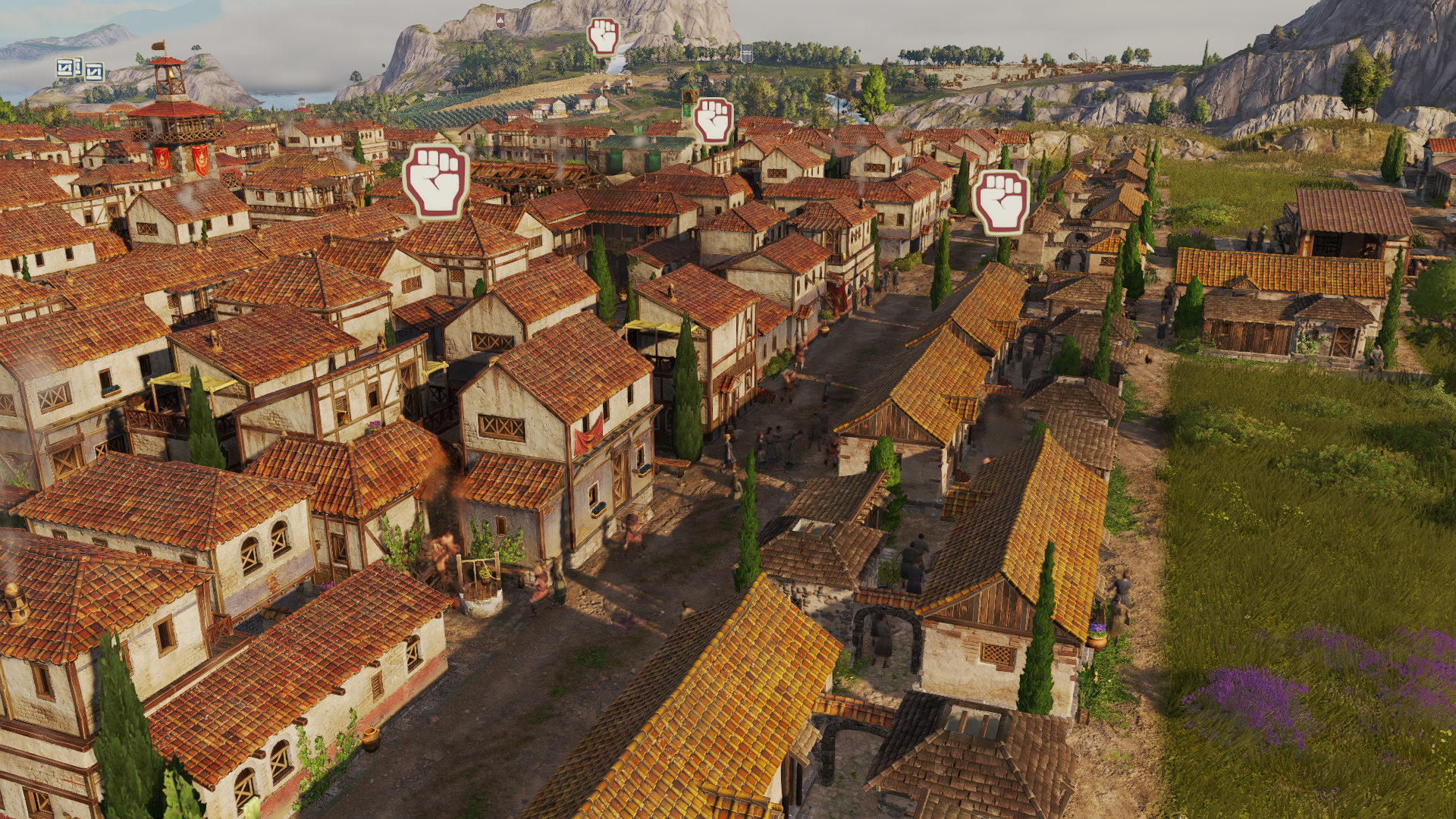
Anno 117: Pax Romana is absolutely gorgeous, and will delight true history nerds. Its Roman setting is recreated wonderfully with intricate details that lead to stunning and life-like streets. There are even some authentic painted statues, which is always great to see.
Out of the two options, I picked Marcia Tertia, a wealthy Roman daughter who has been married off to a troubled governor whom she’s never met. After a series of events in Latium (the game’s Roman region) that I won’t spoil, she winds up banished to Albion (Celtic England), where she ends up acting as the governor in secret to try and get back into the emperor’s good books. In typical Anno fashion, dialogue is comedic throughout, and I found myself enjoying some of the twists and turns.
This is a much shorter campaign than 1800's, lasting just over six hours rather than about 15, though it’s tightly paced and doesn’t overstay its welcome as a result. I couldn’t resist diving into my own sandbox games once I hit the end, though I’m still eager to try the story as the other protagonist - Marcus Naukratius. There are a handful of narrative decisions and some side activities that I wouldn’t mind going back to for a replay, too.
Sign up for breaking news, reviews, opinion, top tech deals, and more.
The best thing I can say about the mode, though, is that it does a very good job of telling you what you need to know. I finished the 1800 story with more questions than answers, but a new player here would feasibly be fully qualified to dive into sandbox or even online multiplayer.
Soggy sandals
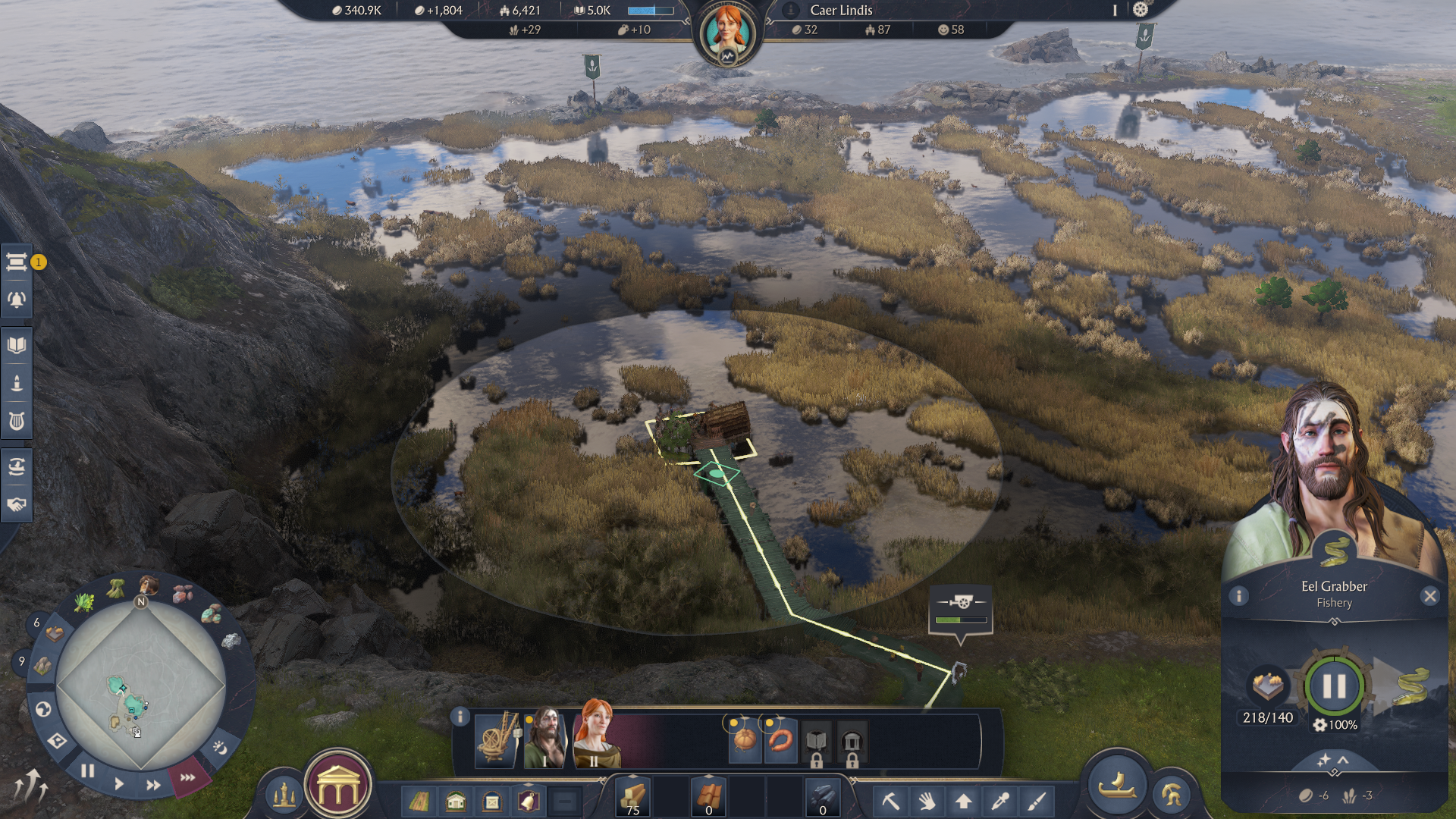
But what exactly is it that you’re doing exactly? Anno fans will know the drill, but for everyone else, this is a city-building game that’s all about constructing supply chains to collect the resources that your citizens need to level up. Anno 117: Pax Romana lets you choose whether to start your game in Latium or Albion, and each region plays out in a slightly different fashion.
In Latium, there are four population tiers: Liberti, Plebeians, Equites, and Patricians. Needs become more complex as you move between the levels, with citizens that initially required porridge and straw sandals eventually demanding access to running water for communal baths, education through libraries, flashy jewellery, and even yummy bird tongues in aspic to nibble.
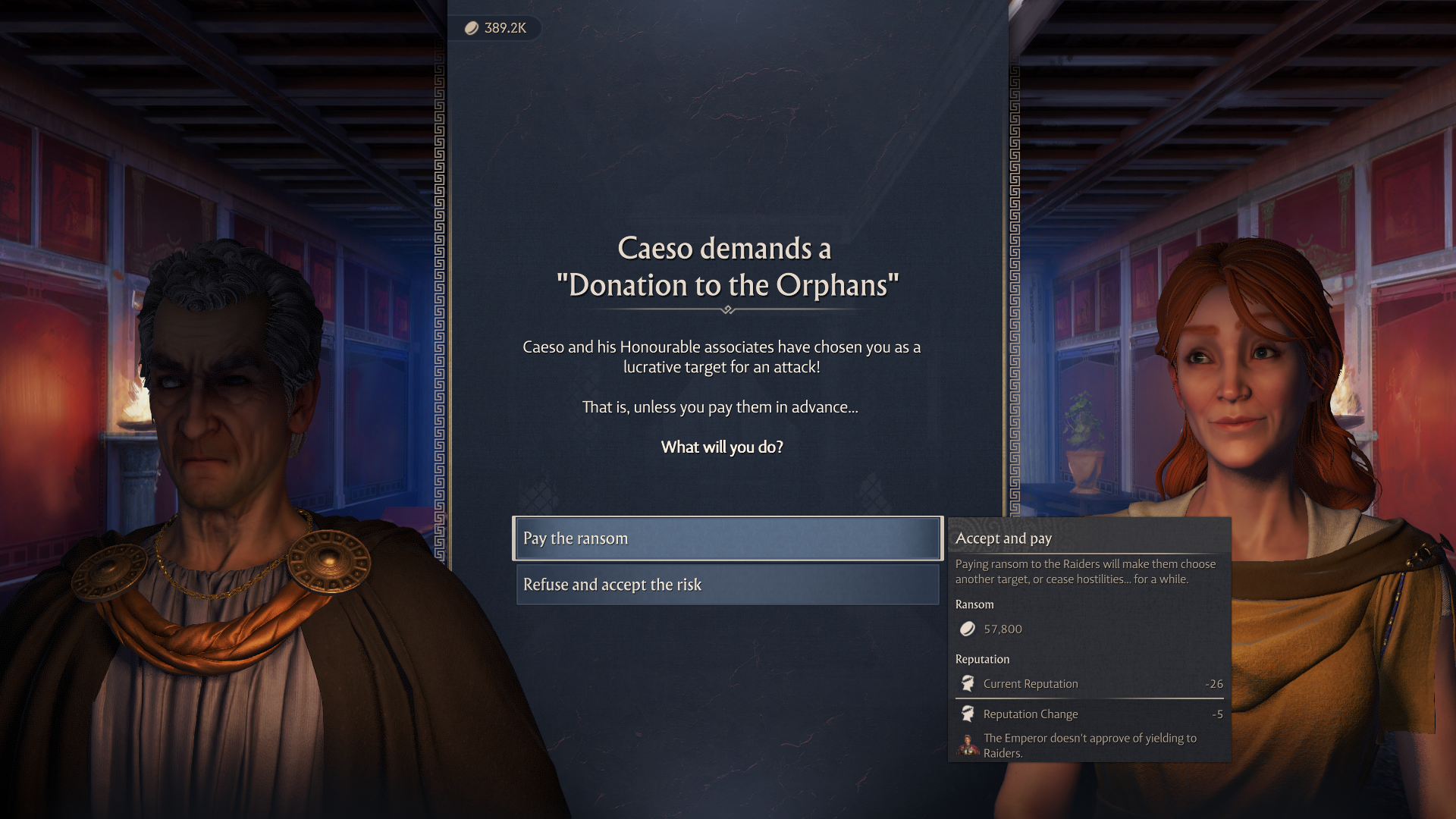
The map is split into multiple islands, with each island only capable of harbouring specific resources. No one island will offer every resource that you need late in the game, so at some point, you will inevitably need to load up a ship and start settling them. Funnelling resources back to your main city center becomes a game in and of itself, as you set up trading routes and, on higher difficulties, deal with the disruption caused by frequent attacks from raiders.
It’s the same formula that fuelled 1800, but importantly, in 117, you don’t actually need to fulfill all of a specific group’s needs to progress.
If you’re struggling to get enough fine glass, for example, you can ignore it and focus on olive oil instead. It cuts down the complexity massively, and while you are rewarded for meeting all needs at once, so less confident players don’t need to worry about overwhelming themselves with too many types of resources to manage.
More refined than ever

You shouldn't take all this to mean that Anno 117: Pax Romana feels incomplete, though. There’s plenty here, including a wealth of quality of life changes that long-time fans will love.
This ranges from small things like a day and night cycle (which wasn’t available in 1800 at launch) and the ability to play using a keyboard and mouse on consoles, to substantial changes such as the option to place buildings diagonally for the first time and a planning mode that lets you visualize your city with blueprints.
Some major DLC features from past games are also included for free. Your governor villa, for example, is effectively identical to the Palace from 1800’s Seat of Power expansion, allowing you to buff parts of your island with well-placed Specialists. Once built, the villa is also the primary target for invaders because land combat, a feature entirely missing from Anno 1800, is back too.
Fighting has always been the weakest part of any Anno game in my eyes. It largely boils down to clicking on enemies, and battles are usually won by whichever side has more soldiers. Unfortunately, there haven’t been many strides in this regard, though I hope the fact that ground combat is back will prove a good foundation for some combat-focused DLC or updates in the future.

There were also some weird bugs that I hope will be addressed. The most annoying of these was with my island’s fire safety rating, which would randomly decrease a few thousand points without warning. Hovering over the icon told me that this was due to “City Status", whatever that means, and there was seemingly very little I could do to remedy it.
I tried moving all my most flammable buildings, like bakeries and kilns, to a separate island, making sure that they were well spaced to avoid their areas of effect, and filling every street corner with Vigilies (the Roman fire department) in vain.
Actual fires didn’t even seem that much more frequent, but this big red number did cause some frustrations with diplomacy as other leaders looked down on my apparently highly combustible settlement.
That aside, I’ve been very much enjoying my time with Anno 117: Pax Romana. It's a more relaxed take on the Anno formula than 1800, and while not as complex, it’s still easy to lose track of the hours as you watch your city grow.
Should I play Anno 117: Pax Romana?
Play it if…
You want a high-quality city builder
Anno 117: Pax Romana is more polished than lots of competing city builders like Cities: Skylines 2. It also offers significantly more content in the form of a single-player story and online multiplayer.
You love the Roman setting
Both Rome and England are beautifully recreated in Anno 117: Pax Romana, with plenty of details that will delight history nerds and lovers of the past.
You were overwhelmed by 1800
Anno 117: Pax Romana is much easier to manage than 1800, with fewer complex supply chains needed to progress. If you love the idea of an Anno game but bounced off the last entry, then this is the perfect time to come back.
Don’t play it if…
You expect even more complexity
If you go into Anno 117: Pax Romana expecting a game that’s even more complicated than Anno 1800, then you will be disappointed. Stick with that past entry and wait for some new expansions to up the difficulty.
Accessibility features
There is no dedicated accessibility menu in Anno 117: Pax Romana, which is a bit of a shame given Ubisoft’s leading track record in the area.
There are still some useful options in the settings, though, such as the ability to rebind your keys and increase the scale of the UI. Dialogue features subtitles throughout, with the option to use only sans-serif fonts for reliability or to remove italics.
How I reviewed Anno 117: Pax Romana
I played close to 20 hours of Anno 117: Pax Romana on PC using a copy provided by Ubisoft, with a small amount of time spent also trying the PS5 version, including testing its mouse and keyboard support.
My system is a 5070 Ti-powered model from retailer Scan that features a compact Corsair 2000d RGB Airflow case, Asus ROG Strix B860-I Gaming Wifi motherboard, Intel Core Ultra 7 265K CPU, a 2TB WD Black SN770 SSD, 32GB of DDR5 Corsair Vengeance RAM, and an Nvidia 5070 Ti manufactured by Asus.
This setup allowed me to play the game smoothly on its highest graphics settings with the use of Nvidia DLSS. For peripherals, I relied on my trusty Razer DeathAdder V3 Pro mouse and Cherry XTRFY K5V2 keyboard, plus an Astro A20 X PC gaming headset for audio.
Throughout my time with the game, I constantly compared my experience with my significant experience playing other Anno games, including 1800, 2205, 2070, and 1404.
First reviewed November 2025

Dash is an experienced tech journalist who currently serves as the Gaming Editor at TechRadar, where he helps oversee coverage of video games and related products.
Before joining the team, he was Contributing Writer at PLAY (formerly Official PlayStation Magazine) and has also written articles for many of the UK's biggest gaming magazines including Edge, PC Gamer, and SFX.
Now, when he's not getting his greasy little mitts on the newest hardware or gaming gadget, he can be found listening to J-pop or feverishly devouring the latest Nintendo Switch otome.
You must confirm your public display name before commenting
Please logout and then login again, you will then be prompted to enter your display name.
